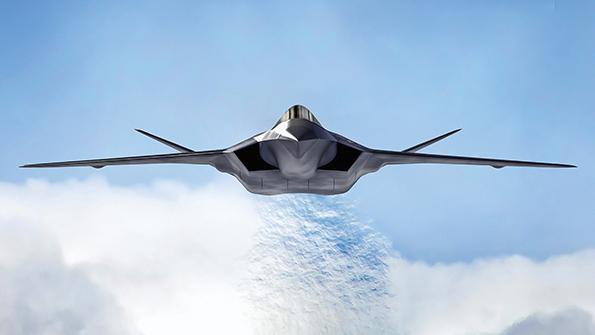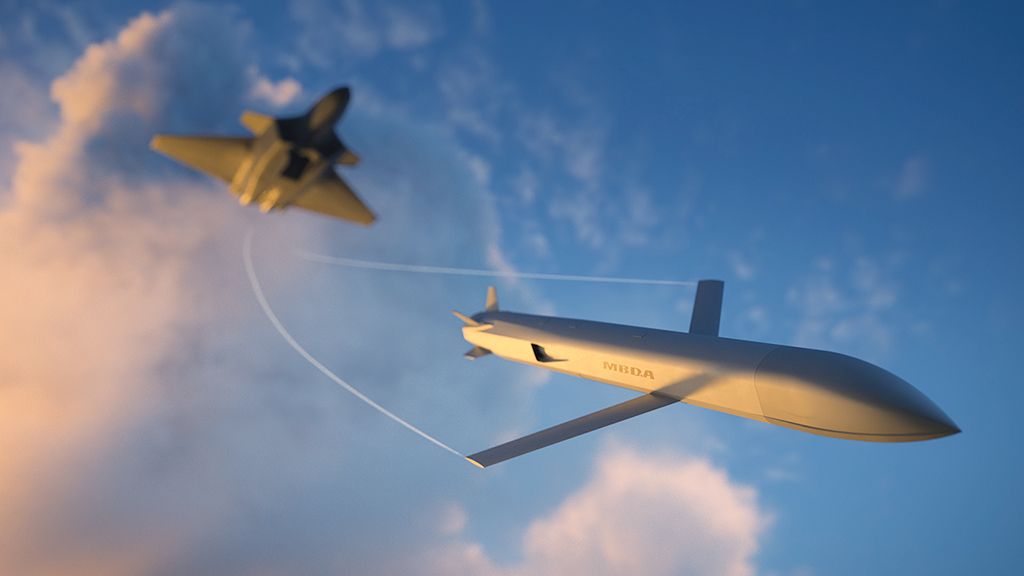Europe’s Future Combat Aircraft Advances Toward Demonstrator Flights

FCAS Next-Generation Fighter.
After a bungled start, the Franco-German-Spanish future combat aircraft program partners are signaling that the project is regaining momentum after internal squabbles delayed early decision-making.
“SCAF is back,” Maj. Gen. Jean-Luc Moritz, director of the Future Combat Air System (FCAS) at the French Air & Space Force, said using the French term for the endeavor that is also referred to as the FCAS or the Next-Generation Weapon System.
- Belgium secures observer status and industrial involvement
- FCAS sensor package to be tested on French Fokker 100 airliner
- Next-Generation Fighter demonstrator to fly in about 2029
The project got off to a slow start with Airbus and Dassault Aviation struggling to agree on work share within the fighter element. These disagreements delayed key program milestones, including plans for the first flight of a demonstrator toward the end of this decade.
“We have learned how to work together,” Jean-Brice Dumont, the head of Air Power at Airbus Defense and Space, told Aviation Week at ILA Berlin in early June.
“Our past and the present made for a fierce competition, so naturally that created tensions about sharing information, and it is normal . . . but now we are cooperating on Eurodrone, cooperating on FCAS, and the future is made of more cooperation,” he said.
The FCAS program aims to deliver a combined future weapon system, principally a next-generation fighter to replace Eurofighter Typhoons in Germany and Spain as well as the Dassault Rafale in France. Uncrewed systems referred to as remote carriers will support the fighter, while a combat cloud network is expected to tie the various systems together to maximize effects, French and Spanish officers said at a Royal Aeronautical Society event in May. The target is to deliver an FCAS initial operating capability around 2040.
To help streamline oversight, the partners have assigned French defense procurement agency DGA management of the program. It also will interface with the industrial consortium of French, German and Spanish companies—including Airbus, Dassault Aviation, Indra, MTU and Safran. The two engine suppliers, MTU and Safran, have set up the European Military Engine Team (EUMET) joint venture to work on the project, with support from Spain’s ITP Aero.
Although the program dates back to political declarations by France and Germany in 2017, its true launch came in December 2022 when the partners embarked on the €3.85 billion ($4.13 billion) Phase 1B that is underway. Its goal is to define the technologies that will be tested in the demonstrators.
“We want to be ambitious, but also we are time-limited, and we don’t have billions of euros to spend,” Dumont said.
Seven pillars of work are to refine elements of the FCAS. Work within the pillars is roughly balanced among the three countries to minimize points of tension.
Dassault is heading development of the New-Generation Fighter Demonstrator. Other divisions and their leaders are EUMET, engine work; remote carrier and crewed-uncrewed teaming, Airbus in Germany, which also oversees the combat cloud; simulation laboratory work, Dassault; sensors, Indra; and low-observable technologies, Airbus in Spain.
The program has also devised an unusual mechanism to try to tap into emerging technologies, setting aside a system of so-called flex tokens that are being investigated to see what nontraditional suppliers may be able to contribute, said Brig. Gen. Philippe Koffi, DGA director of combat systems capability. The first of those tokens has been allocated, and another batch is coming this year, he said.

Many of the high-level ground and flight demonstrations will not unfold until the start of Phase 2, which is planned for mid-2025, when funding is supposed to increase to €4.5 billion, and run through the end of the decade.
One minor hiccup in the transition to Phase 2 could come from the results of German parliamentary elections planned for October 2025 that could slow the progress of the project.
The sensor package likely will take to the air in a modified DGA-owned Fokker 100 around 2028. The aircraft demonstrator is due to fly in 2029, powered by off-the-shelf Safran M88 engines used on the Rafale. The aircraft will be utilized to explore speed, maneuverability and low-observability requirements for the eventual fighter. But the engines are also a limiting factor in the demonstrator design, as engine size and performance “condition the size of the aircraft,” Dumont noted.
The remote carrier work also will involve flight demonstrations. Program officials have indicated that these remote carriers are key to the overall FCAS construct.
MBDA said it plans to flight-test a 400-kg (880-lb.), 4-m-long (13-ft.) uncrewed aircraft as part of the demonstrator program. The European missile joint venture is focusing on what is called an expendable remote carrier, with a design that features a cruise-missile-like airframe with retractable wings and an embedded engine to minimize the radar cross section. Airbus is leading development of larger recoverable remote carriers, while Spanish joint venture Satnus—made up of GMV, Sener Aeroespacial and Tecnobit-Grupo Oesia—is working on the algorithms and systems that will enable them both to be collaborative.
“We have to generate mass with the remote carriers,” Moritz said. The vehicles are expected to serve as decoys for ground-based air defenses and jammers to act as flying weapons bays for the NGF, boosting the fighter’s combat persistence without the need for it to carry external weapons. Others will operate as a distributed sensor network dozens if not hundreds of miles ahead of the fighter, seeking potential targets and threats.
Engine technologies, Koffi said, largely will be validated on the ground, as will aspects of the combat cloud, simulation work and critical key low-observable (LO) technologies. Koffi said maturing some of those LO technologies toward the end of the decade will be key to ensuring the future air vehicles—crewed and uncrewed—are state of the art when they come into service. “Our aim is not to be state of the art in LO in 2030, but state-of-the-art by 2040,” he said.
In addition to paving the way toward the demonstrators, Phase 1B efforts also will be geared toward defining the final shape, form and size of the fighter as well as the ratio and type of remote carriers that will operate alongside it.
Five architectures were under consideration along with five types of remote carriers. These have been put through 11 simulated mission scenarios posed by the customer air forces. Although the structure of the program has largely been set, elements could change, in part to accommodate other participants.
Belgium has signed up as an observer and provided funding for the program to enable its national industry to participate in the next phase of development. Unlike France, Germany and Spain, whose workshare is tied to their equal funding level, Belgium’s participation will be linked more closely to the industrial involvement the country’s companies can secure.
Koffi said other countries also could join. Saudi Arabia, for instance, has said it is eager to become a full partner in a next-generation fighter program, with a decision still possible this year, said Maj. Gen. Hamed Alamri, director of Joint Chiefs of Staff and chairman of the Committee on Future Capabilities of the Armed Forces for the Royal Saudi Air Force.
Even as program officials aim to convey a sense of optimism that some of the early squabbles are behind them, the scars are not forgotten.
“There will be critical decisions taken in the next months and years, and to do that we need to create mutual trust and understanding,” Koffi said.






